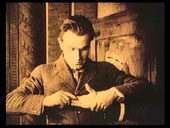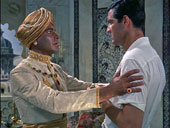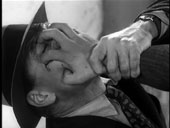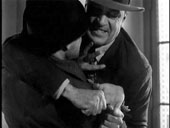 |
|
16:9 in English: The Artist and the Killer: Fritz Lang’s Cinema of the Hand |
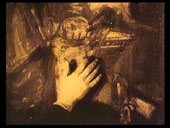 Fig.1: The Spiders (1919). |
||||||||||||||||||
In a sequence near the end of Fritz Lang’s aborted 1919 serial Spiders, amateur sleuth Kai Hoog visits a character named John Terry who may, unbeknownst to Terry himself, be in possession of a secret document locating a Buddha stone which the criminal organization the Spiders is after. What Terry knowingly possesses are some objects which had belonged to the descendants of a pirate captain, including a portrait of the captain and a box containing a sea log. Hoog’s methods of deduction in this sequence are initially visual as he looks at the portrait and peruses the contents of the logbook. But Hoog’s initial reliance upon the visual here is finally inadequate, leading to the necessity for touch. Hoog’s hand runs along the surface of the painting, feeling for the confirmation of his deduction - a map leading to the treasure (fig.1). Outside of the door, however, Terry’s eavesdropping butler can be heard. This butler is, in fact, Four Finger John, a member of the Spiders gang, his face in disguise. But Hoog “unmasks” Four Finger John, not by pulling off his rubber mask (that comes just a bit later) but by first grabbing hold of the villain’s hand, revealing the missing finger (fig.2). Perception in this sequence not only shifts between the visual, the aural (in this “silent” film), and the tactile but culminates and becomes embodied in a character whose identity is strongly bound up with his hand. This somewhat primitive early example from Lang’s body of work is nevertheless useful for laying a foundation for much of what will follow here. Throughout Lang’s cinema, we find characters whose professions or sensibilities cause them to be surrounded, if not engulfed, by images: photographs, films, maps, architectural blueprints, paintings. And yet, as so many Lang commentators have noted, these films articulate a fundamental skepticism towards the visual in which the image often either signifies too much or too little. As a consequence of this over-determined investment in the visual, the other senses are often called upon to correct, modify, or extend perception. Of these other senses, touch assumes a privileged role. Lang’s films are filled with some of the most indelible images of tactile perception that the cinema has given us, their protagonists constantly reaching out to touch all manner of phenomena and in which the hand acquires enormous signifying weight. However, the hand is never privileged over the eye in Lang. The hand creates and perceives but it also erases and destroys as it enters into a world in which perception is inherently multi-faceted and often resistant to fixed meanings. Tom Gunning has already offered a thoroughly detailed analysis of Lang in relation to modernist discourses on writing, inscription and the perpetual threat of the erasure of the author. I have no desire here to dispute this powerful reading. Instead, I would like to draw attention to those moments in Lang in which we not only see a strong attempt to resist this threat of erasure through an investment in the act of tactile perception but also a desire to touch the film itself. Desperate Gestures and Violent Inscriptions |
|
||||||||||||||||||
Such an approach requires that Lang’s actors gesture in the most iconographic terms. This is epitomized by Rudolf Klein-Rogge as Rotwang in Metropolis (1927), whose broad, sweeping gestures and wide-eyed facial expressions nevertheless always seem to be communicating something which resists full articulation. Klein-Rogge’s Rotwang is an extreme example but there is a continued use throughout Lang’s career of his actors employing non-naturalistic devices like the clenched fist, the claw-like gesture, the gnarled hand to connote extreme emotional states. The need to express something deeply, to gesture in an emphatic manner and to frequently leave a mark behind as a result of this is central to Lang’s cinema. But this expression is the mark of the artist and of the killer - at once creating and destroying - which usually involves a form of self-destruction, as in Rotwang’s missing hand, severed through the process of creation, its mechanical replacement brandished by him as the emblem of his romantic agony (fig.3). Lang was the product of a moment within European history in which ideas about the hand and tactile perception were central to a number of discourses. Jugendstil and Expressionist conceptions of the body are pronounced throughout Lang’s work in Germany and America and may be seen as early as a youthful self-portrait done in the style of fellow Viennese native Egon Schiele, Lang’s only “true idol.” (McGilligan, 25) Typical of Schiele’s style, the hands are very prominent and, like Four Finger John, contain only four fingers. One of the hands is reaching towards his neck, suggesting self-strangulation, while the other forms a claw-like gesture as it reaches out to this other hand. In either case, they appear to exist apart from Lang’s body and from his own conscious control. The hand that lives a life separate from the body, a recurring motif in tales of the gothic and undergoing a revival during the Weimar period, manifests itself in many of Lang’s protagonists who possess hands which seem to do these protagonists’ unconscious bidding. I am thinking here not only of the obvious example of the serial killer Beckert in M (1931) but also Stephen Byrne in House by the River (1950) and Carl Buckley in Human Desire (1954), all of whom strangle in ways which suggest that the act is beyond their control even while it simultaneously enacts their unconscious desires. |
 Fig.3: Metropolis (1927). |
||||||||||||||||||
While avant-garde cinema has given us filmmakers (most notably Stan Brakhage) who literally take their films in hand and scratch, draw and paint directly on to celluloid, commercial narrative cinema has offered more fleeting, less literal attempts. The most notable of these is the famous image of the Grim Reaper in Metropolis who moves towards the camera and with the sweeping gesture of his scythe appears to scratch the surface of the film, leaving an animated white trace across the frames. The desire to touch something which resists firm physical grasp may explain the recurrence of images and objects in Lang which are marked with inscriptions and emblems. In Lang, it is not enough to possess an object - one must also brand it with one’s own name or identity as though wanting to claim it in perpetuity as one’s own, like a work of art that is signed (fig.4). An erotics of touch is not entirely absent from Lang but it tends to be framed within a larger system of violent inscription and desperate grasping. In the false seduction scene from Human Desire, Vicki, under pressure from her husband Carl who has just murdered Vicki’s former boss, seduces Jeff, thereby implicating him as a witness in their false innocence. In Jean Renoir’s 1938 version of this same source material, Emile Zola’s La Bête Humaine, the two characters have a brief conversation on the train during which Lantier (Jeff’s French counterpart) has something caught in his eye which he dabs with a handkerchief. In Lang’s version, Vicki pretends to have something in her eye so that Jeff must move very close to her, literally touching her eye with a handkerchief. She rests her hand against his while he attempts to remove the non-existent speck as the lines of dialogue almost entirely refer to the act of seeing or touching, culminating in Vicki’s line, “Thanks for the surgery.” In Lang, murder is frequently the scene of violent struggle, taking place through prolonged and anguished strangulations or through stabbings with small, blunt objects requiring that the action be awkward and frustrated. |
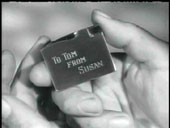 Fig.4: Beyond a Reasonable Doubt (1956). |
||||||||||||||||||
This sense of gestural frustration likewise affects the basic manner in which not only criminal acts are represented but also their attempted detection. The incessant search for evidence in Lang points to the world of detective fiction so central to his cinema. But this is also a search in which the indexical signs are unusually difficult to isolate and in which visual evidence is unreliable. Consequently, the degree of frustration is so strong that the perceiving subjects must not only touch the environment but they do so in such a way that they seem to revert to pre-civilized behavior. These searches often reduce both those who are being tracked down and those who are doing the detective work to animal-like states. If Lang’s protagonists are frequently artists, they are just as frequently (and sometimes simultaneously) hunters, stalkers, as in the emblematic moment from M in which the letter M is drawn in chalk on the palm of one of the men stalking Beckert, the man imprinting this mark on Beckert’s back (fig.5). In their desperate searches, characters in Lang often find themselves flat on the ground, their hands reaching out to grasp an elusive object, as when Vicki in Human Desire attempts to retrieve an incriminating letter hidden by her husband in the heating vent of their home, a letter hidden so deeply that she cannot see it but can only feel for it as she lies face down on the floor. |
 Fig.5: M (1931). |
||||||||||||||||||
Such a concern with the hand’s relationship to the primitive was crucial to a number of Freudian and post-Freudian psychoanalytic discourses emerging when Lang’s own formation as a filmmaker was taking place. Otto Rank, for example, argues that all language formation, far from being opposed to gesture and the hand, is in fact derived from it and that the standard opposition between the artist who works with his hands within the realm of the plastic arts and the artist who works with the written or spoken word may no longer be tenable (Otto Rank, 249)*. The fascination with these kinds of desperate, stalking gestures in Lang may be seen, then, as not simply a desire on the part of a character to find an elusive object but also as a symptom of the deepest, most primal need to express. Chris Cross’s identity as an artist in Scarlet Street (1945) is cruelly stolen from him by Kitty, who signs Chris’s paintings with her own name for money. Chris masochistically accepts and enjoys this relationship (going so far as to paint Katherine’s ironically entitled “Self-Portrait”) even though the final signature, the last hand taken to his own work, is someone else’s. The hands with which he paints are, in a sense, never completely his. His murdering of her with an ice pick is not only a displaced rape but also a way of marking her body with the stabbings, of signing the body of this woman who has elsewhere put her own mark on his paintings. Faces and InsertsOf equal relevance to Lang’s conception of the hand would be his emergence on the international film scene in the immediate aftermath of World War I during a period when the close-up was becoming a defining feature of the style of the filmmaker. The close-up is not only a way of bringing the subject close to the camera, it is also an assertion of authorship and control over the images. The critical and theoretical literature on the close-up has focused much more strongly on the face than the hand. Although capable of being deeply expressive, the hand in cinema most often compliments and extends the emotions already being conveyed through facial expression and body language. A very well-known example of this approach (and a film which Lang most certainly saw) is D.W. Griffith’s Intolerance (1916): the cutting between close-ups of Mae Marsh’s face and hands during the sequence of her husband on trial. |
* In terms of more recent work, I am also reminded here of Carlo Ginzburg’s hypothesis that the hunter may in fact have been the first to tell a story because he was able to metonymically read and decipher the nearly imperceptible tracks left by his prey. See Ginzburg, Clues, Myths, and the Historical Method, trans. John and Anne C. Tedeschi, Baltimore: The Johns Hopkins University Press, 1989, p. 103. | ||||||||||||||||||
In Lang, and again typical of the gothic tradition, it is more proper to speak of a basic tension between the hand and the face, even at times a battle between the two for expressive power. The face is infinitely malleable, available to be disguised, to assume or to have enforced upon it the role of a mask. We often find in Lang a recurrence of shots in which a character sits in a chair, the face inexpressive, while the hands will flex and un-flex, connoting not simply thought but the presence of an ambiguous life which the face causes us to doubt: Moreover, the face can, through the eyes, see and perceive, register thought and emotion, but it cannot touch and remains more physically limited than the hand. There is an extraordinary sequence in M in which we see Beckert’s face for the first time. He stands before a mirror while the voice of a graphologist on the soundtrack analyzes Beckert’s personality through his handwriting as we also see, in one of the most widely recognizable images from Lang, a huge blow-up of a thumbprint (fig.6). But in M, this magnified thumbprint simply becomes one of many clues marked by its limited capacity for signifying, especially ironic in this case because too many hands have touched the cards, nullifying the ability to read the print itself. Beckert not only makes faces which seem to simultaneously confirm and parody the analysis being offered of what his hand has produced; he also needs his fingers to mold his face into an Expressionist form of distortion and grotesquerie (fig.7), as though performing a savage reversal of the moment in Griffith’s Broken Blossoms (1919) when Lillian Gish forces her face into a smile by inserting her fingers into the corner of her mouth. Discussions of the hand in Lang’s work will often irresistibly return to Lang’s anecdotal claim that he sometimes used his own hands in place of the hands of certain actors for insert shots. These hands of Lang’s are a physical trace left within the body of the finished film, the sign of the author’s hidden or veiled power, evoking Nietzsche’s description of the original images of the gods which both intimate their presence but conceal them from full view. However, Lang’s authorial presence remains elusive and phantom-like, an acknowledgment that the artist’s hand will never firmly and unambiguously make itself known, a sign of loss as much as power. He is everywhere and nowhere, haunting the margins of this world he has struggled to create. Such a gesture may be seen as not only an acknowledgment of the difficulties filmmakers face in ever being able to firmly assert their imprinting hand but also that the filmmaker’s desire to touch the work will remain perpetually frustrated. In 1912 and 1913 Freud published a series of articles which would eventually form Totem and Taboo in which Freud writes that the infant’s strong desire to touch meets with prohibition and this desire, repressed but not abolished, often leads to an ambivalent fixation upon a single object (Freud, 37-38). One may argue that the cinema has, on a large cultural scale, allowed for a significant playing out of a type of ambivalent physical fixation due to its haptical properties, at once more and less intense than in any other art form which precedes it and that this fixation is one in which filmmakers are frequently caught. “Contact, but at a distance” is Jacques Aumont’s phrase for this and it is made in reference to Jean-Luc Godard’s claim that if he were forced to choose, he would, as a filmmaker, rather lose his eyes than his hands (Aumont, 209). One important exception in a filmmaker’s ability to literally touch the image is in the editing room. There is a posed publicity shot of Lang editing Hangmen Also Die (1943), his monocle in place, holding up the footage in both hands while peering at it intently, as though the senses of sight and touch are equally required for the task. We may also recall here Earl, the motion picture projectionist of Clash by Night (1952), who is described by his friend Jerry as someone who “handles” the movie stars all day. Our first viewing of Earl takes place in his projection booth as he rewinds the reels to the film he is projecting while speaking of his desire to cut up the face of the film’s leading lady with a knife. Even more than the close-up it is the insert shot that is most strongly identified with Lang. By definition, an insert shot is a forceful, less fluid and continuous way of cutting closely into something, most often drawing attention to objects or a portion of the body other than the face, typically hands and feet. While a contemporary of Lang’s such as Eisenstein will, in films such as Strike or Battleship Potemkin (both 1925), make use of a number of close shots of objects being held by various individuals, it is the object which will almost invariably be the center of attention and not the hand since these objects are so often being called into metaphoric and political action, assuming a dynamic role in relation to movement and montage. In Lang, however, the framing and positioning of the hand within an insert shot tends to draw an equally strong attention to both the object and the hand which is doing the holding. For Lang, to hold an object is also to place it against the palm or to wrap one’s fingers around it in order to perceive and this will often give itself over to action reluctantly. Touch as a mode of perception and experience in and of itself dominates Lang’s cinema and structures these films as much as the moment when perception gives way to concrete action. |
|
||||||||||||||||||
Lang’s idiosyncratic use of montage, alternately observing and shattering the principles of the continuity system, creates not only a highly unstable sense of space but also problematizes the act of looking itself: a world in which point-of-view shots often turn out to be shots which cannot be confidently ascribed to any character’s point-of-view and a world in which eyeline matches will frequently refuse to fully match. Thomas Elsaesser has described how Lang’s editing choices evoke “an incision almost of a surgical operation,” and of the impression of violence that emerges from this (Elsaesser, 163)*. We find this approach to editing even as late as The Tiger of Eschnapur (1959). When Chandra presents his dead wife’s ring to Harald Berger (fig.8) this action is interrupted by an insert shot which has a strongly presentational look to it (fig.9). The insert shot here ostensibly acts as a bridge for cutting across the axis of action. But the process is anything but fluid and both the insert shot and the cut which takes us across the axis are fragmented. Quite often, the characters in Lang (like the spectator) must grapple blindly through these spaces, a process which may also explain the recurrence of protagonists who both literally and metaphorically grasp at the world surrounding them. Even in this relatively simple moment from The Tiger of Eschnapur, Chandra seems to grab hold of Berger, almost as though he is holding on to him to help the two of them get across the axis (fig.10). Lang’s editing here disrupts the sense of touch and unsettles the process of passing the ring from one hand to another, a gesture of brotherhood nevertheless marked by implicit violence. Conclusion |
* See also Michael Fried’s analysis of surgery as a metaphor for the inscription of the artist (in relation to Thomas Eakins’s The Gross Clinic) in Realism, Writing, Disfiguration: On Thomas Eakins and Stephen Crane, Chicago and London: University of Chicago Press, 1987.
|
||||||||||||||||||
Trafficking in these kinds of images points to a connection with another filmmaker steeped in Roman Catholicism, ten years younger than Lang, and an admirer of his work, Luis Buñuel. The Surrealist fascination with psychoanalysis and with naturalist images of the body also dovetails with some of Lang’s own concerns*. The hands of Un Chien Andalou (1928) are among the most memorable of film history: the severed hand in the street being poked at with a stick or the close-up of ants crawling out of a hole at the center of the hand of the male protagonist. Images which are disturbing and seemingly irrational but which also connect the hand-as-fetish idea back to the earth, to the site of origins, a film in which the hand has no use value. The notorious opening images of Buñuel sharpening a razor, followed by a shot of a razor slicing the eyeball of a woman, still make spectators scream, not only because they are shocking on a purely representational level but because spectators can imagine the physical sensation of this happening to them, as though the act itself cannot be contained within the dimensions of bthe screen. That this slicing is being implicitly done by the auteur only magnifies the sense of violation. Even if Lang’s editing methods have inspired surgical metaphors, he never goes quite this far. The eye doesn’t get sliced with a razor in Lang but it may get literally attacked by the hand, as in the agonizing fight scene in Cloak and Dagger (1946). In this sequence, an American scientist and an Italian fascist engage in a violent struggle in which the fascist places his hands over the scientist’s face, his fingers attempting to gouge out the eyes of the scientist (fig.11) until the struggle switches to the hands battling one another, evoking the hands in conflict from Lang’s early self-portrait. (fig.12). I cannot help but regard this moment from what is traditionally thought to be a minor film as fundamental for understanding Lang’s particular relationship to a cinema of the hand. The eyes of the scientist, while assaulted and bloodied, remain intact, while the hand of the fascist unsuccessfully attempts to negate the scientist’s eyes before the American fights back by turning his attention to the hand, another form of violence which compromises but does not defeat the hand’s tactile properties. In the midst of all this Lang stands behind the camera. Gazing intently at the action while perhaps gesturing with equal intensity, he remains committed to the possibility of a dialectic between vision (however unreliable) and touch (however violent). Clearly, it is not enough for an image to represent something for Lang. That image must also show the signs of its own struggle to give birth to itself, a struggle in which the hand is so often implicated. It is this difficult journey which Lang sets for both himself and for the spectator, one which alternates so vividly between the realms of the visual and the tactile which gives his cinema so much of its fundamental power. --- An earlier version of this essay was presented at “The Five Senses of Cinema,” International Film Studies Conference XI at Udine, Italy, Spring 2004. |
* One should also note here one of Buñuel’s rare contributions to a Hollywood film in his work on Curt Siodmak’s screenplay for The Beast with Five Fingers (Robert Florey, 1946), starring Peter Lorre. While he receives no credit, Buñuel reportedly made contributions to the film that include hallucinations of the severed hand of a dead pianist scurrying, spider-like, across a floor and playing a Bach chaconne for the left hand, an image Bunuel would later rework in The Exterminating Angel (1962).
|
||||||||||||||||||
|
|||||||||||||||||||
|
|||||||||||||||||||
 |
|
 |
